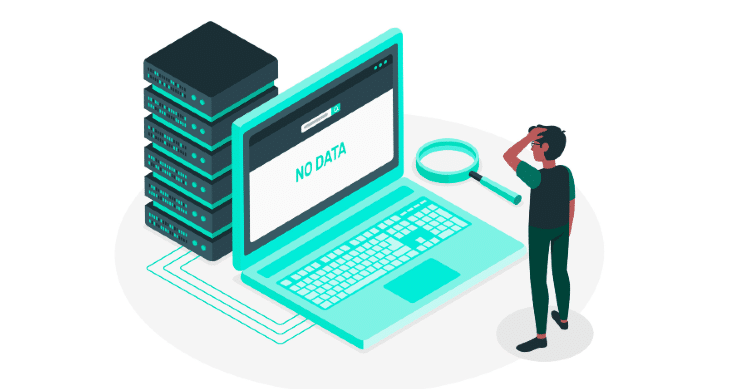The stakes for safeguarding sensitive information have never been higher. Cyber Data loss can lead to severe consequences, including financial losses, damage to reputation, and legal repercussions.

Section 1: Understanding the Dynamics of Data Loss Prevention
What is Data Loss Prevention?
To embark on a journey of effective data loss prevention, it’s imperative to understand what a data loss prevention strategy truly encompasses. Beyond being a set of security protocols, data loss prevention policies are a strategic approach that involves identifying, monitoring, and protecting sensitive data throughout its lifecycle.
The Evolution of DLP: From Perimeter Defense to Comprehensive Strategy
Traditionally, cybersecurity focused on building strong perimeter defenses. However, the evolving threat landscape necessitates a shift toward more comprehensive data loss prevention methods considering data in various states—whether at rest, in motion, or in use.
The Business Impact of Data Loss
Financial losses, regulatory fines, reputational damage, and intellectual property loss are among the risks that underscore the need for a robust data loss prevention program.
Section 2: Key Considerations for Implementing DLP Successfully
Strategic Planning for DLP Implementation
A successful Data Loss Prevention (DLP) strategy involves strategic planning and implementing key considerations. Let’s focus on the strategic aspects,
Data Governance Framework
Implementing a robust DLP strategy begins with establishing a solid data governance framework. This involves defining clear policies, procedures, and data ownership throughout its lifecycle. Organizations can create a structured foundation for data loss prevention techniques by delineating responsibilities and ensuring accountability.
Risk Assessment and Prioritization
Conducting a thorough risk assessment is paramount to identify potential vulnerabilities and prioritize data protection efforts. This involves evaluating the sensitivity and criticality of different data types, understanding potential threats, and aligning protective measures based on the assessed risks.
Integration with Business Processes
Effective DLP goes beyond technology; it integrates seamlessly with existing business processes. Organizations should assess and align DLP strategies with day-to-day operations, ensuring minimal disruption while maximizing data protection. This strategic integration ensures that DLP becomes an enabler rather than an impediment to business functions.
Continuous Monitoring and Adaptation
A successful DLP implementation is an ongoing process that requires continuous monitoring and adaptation. Implementing technologies that provide real-time insights into data usage, anomalies, and potential threats ensures that the DLP strategy remains agile and responsive to evolving risks. Regular assessments and adjustments based on emerging threat landscapes contribute to the longevity of the DLP framework.
Section 3: Deep Dive into Best Practices for DLP
Data Discovery and Classification: The Pillars of Precision Protection
Implementing a robust data discovery and classification process is akin to fortifying the pillars of a castle. Start by conducting a thorough audit to identify where sensitive data resides. Leverage automated tools to classify data based on predefined policies, ensuring consistency and accuracy. Organizations can precisely tailor protective measures by understanding the landscape of sensitive information.
Real-World Example: A financial institution employs data discovery tools to identify and classify customer financial records. Automated classification tags enable the institution to enforce stringent access controls and encryption measures, ensuring the utmost protection for sensitive financial data.
Contextual Awareness: Elevating DLP Controls with Real-Time Insight
Contextual awareness transforms DLP from a static defense mechanism to a dynamic and adaptive strategy. Instead of merely identifying sensitive data, organizations gain real-time insight into how, when, and why it is accessed. This heightened understanding enables the implementation of context-aware controls, ensuring that security measures align with the specific circumstances surrounding data usage.
Real-World Example: A healthcare organization utilizes contextual awareness to distinguish between legitimate patient data access by medical staff during working hours and potentially suspicious access outside these hours. This nuanced approach enhances security without impeding essential healthcare workflows.
Start Getting Value With
Centraleyes for Free
See for yourself how the Centraleyes platform exceeds anything an old GRC
system does and eliminates the need for manual processes and spreadsheets
to give you immediate value and run a full risk assessment in less than 30 days
Endpoint Protection: Securing the Weakest Link
Endpoints represent a vulnerable entry point for cyber threats. Deploying comprehensive endpoint protection measures is akin to fortifying the gates of a fortress. Encryption safeguards data at rest, access controls limit unauthorized user interactions, and advanced threat detection mechanisms provide real-time defense against evolving threats.
Real-World Example: A technology company implements endpoint protection on employee laptops. In the event of a device loss, the encrypted data remains inaccessible to unauthorized individuals, mitigating the impact of a potential breach.
Network Security Controls: Vigilant Monitoring of Data Movement
Networks are the arteries through which data flows, and monitoring this movement is akin to maintaining vigilant guards along the castle walls. Employ encryption for data in transit, deploy intrusion detection systems, and leverage deep packet inspection to scrutinize network traffic. Organizations can detect and thwart potential threats by staying vigilant before they breach the castle walls.
Real-World Example: A retail company utilizes network security controls to monitor transactions between its online store and payment gateway. Encryption ensures the secure transfer of customer payment information, safeguarding sensitive data during the transaction process.
User Education and Training: Building a Resilient Human Firewall
The human element is the castle’s first line of defense. Educate and train employees to recognize phishing attempts, use strong passwords, and follow secure data handling practices. By building a resilient human firewall, organizations empower their workforce to protect sensitive data actively.
Real-World Example: An educational institution conducts regular cybersecurity awareness training for faculty and students. As a result, individuals become adept at identifying potential threats, reducing the risk of falling victim to phishing attacks or inadvertently mishandling sensitive information.
Section 4: Advanced Strategies and Emerging Technologies
Behavioral Analytics: Unveiling Patterns for Proactive Defense
In the intricate realm of data loss prevention, behavioral analytics acts as the astute watchman atop the castle tower. Organizations can unveil subtle deviations that may indicate potential threats by analyzing user behavior patterns. Machine learning algorithms, trained on historical data, enable proactive defense by predicting and preventing unauthorized access or data exfiltration.
Real-World Example: A large corporation employs behavioral analytics to analyze employee interactions with sensitive financial data. Unusual patterns, such as accessing data from an unfamiliar location, trigger real-time alerts, allowing security teams to investigate and mitigate potential insider threats.
Cloud-Based DLP: Navigating the New Horizons of Security
As organizations traverse the expansive cloud landscape, extending data loss prevention measures to the cloud becomes imperative. Cloud-based DLP solutions act as versatile guardians, securing data stored in cloud environments and regulating data movement between on-premises and cloud infrastructures. This approach ensures a unified and cohesive defense strategy across diverse data storage platforms.
Real-World Example: A global enterprise adopts cloud-based DLP to protect sensitive customer data stored in cloud applications. The solution seamlessly integrates with popular cloud platforms, allowing the organization to enforce consistent DLP policies irrespective of where the data resides.
Integrated Threat Intelligence: Fortifying Defenses in Real-Time
The information age requires constant vigilance, and integrated threat intelligence serves as the vigilant scouts surrounding the castle. By incorporating real-time threat intelligence feeds into DLP solutions, organizations stay one step ahead of emerging threats. Proactive adjustments to DLP policies and controls ensure that defenses are fortified against the latest tactics employed by cyber adversaries.
Real-World Example: A financial institution integrates threat intelligence feeds into its DLP system. As new malware signatures are identified globally, the DLP system automatically updates its policies, enhancing the organization’s ability to thwart potential attacks leveraging the latest threats.
A Win-Win Strategy for Data Loss Prevention
Let’s dispel a common myth as we conclude our Data Loss Prevention (DLP) discussion. DLP initiatives are often perceived as massive, multi-year endeavors, but they don’t have to be. Implementing a DLP program can be a manageable, step-by-step process, especially when organizations adopt a pragmatic, incremental approach.
Gartner Research VP Anton Chuvakin offers a clear perspective: “Deploying a DLP tool should progress from one tactical success to another, avoiding outright failure due to complexity and organizational politics.” In simpler terms, instead of attempting an all-encompassing solution, focus on achieving quick wins – tactical successes that contribute to the overall effectiveness of the DLP program.
This pragmatic approach helps organizations avoid potential complexity and internal politics pitfalls. Organizations can iteratively strengthen their data protection measures by celebrating small victories and learning from them. This approach ensures adaptability and ongoing improvement in cybersecurity, where threats constantly evolve.
In this context, tools like Centraleyes offer a streamlined solution for data loss prevention. With centralized access to crucial metrics and data points, organizations using Centraleyes can proactively identify and address vulnerabilities before actualizing threats.
The key takeaway is that A DLP program can be manageable. It’s a journey of practical steps, each contributing to enhancing data defenses. With a grounded mindset, strategic planning, and a commitment to continual refinement, organizations can successfully navigate the path of DLP implementation, securing their assets and maintaining stakeholder trust.
In cybersecurity, as in any field, success lies not just in the destination but in the measured progress, resilience, and ongoing pursuit of excellence.
Start Getting Value With
Centraleyes for Free
See for yourself how the Centraleyes platform exceeds anything an old GRC
system does and eliminates the need for manual processes and spreadsheets
to give you immediate value and run a full risk assessment in less than 30 days






